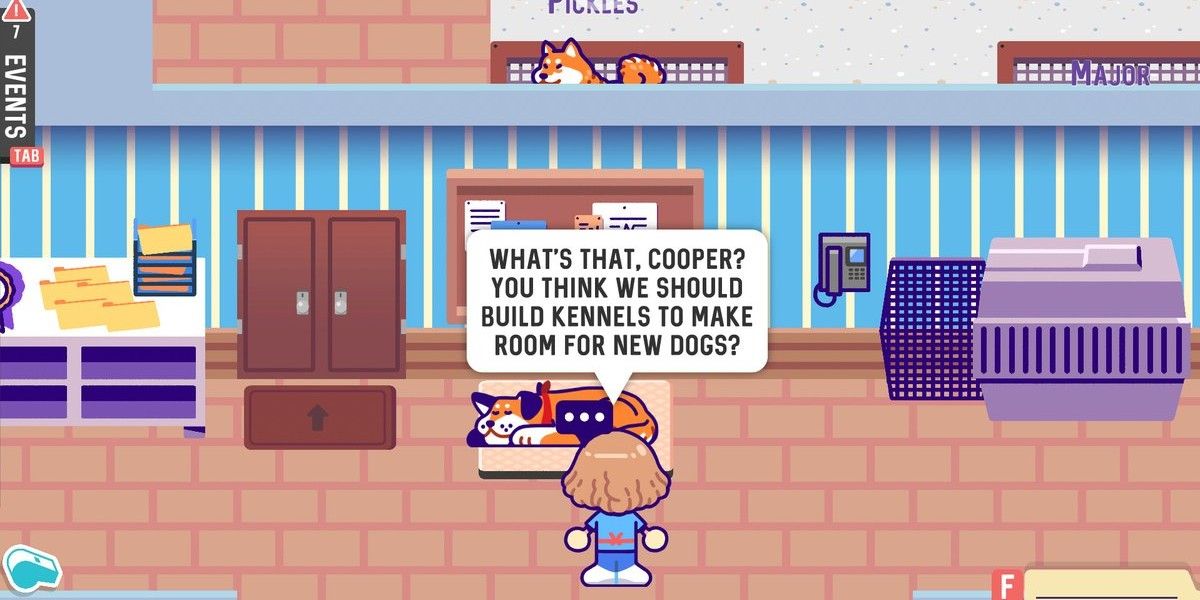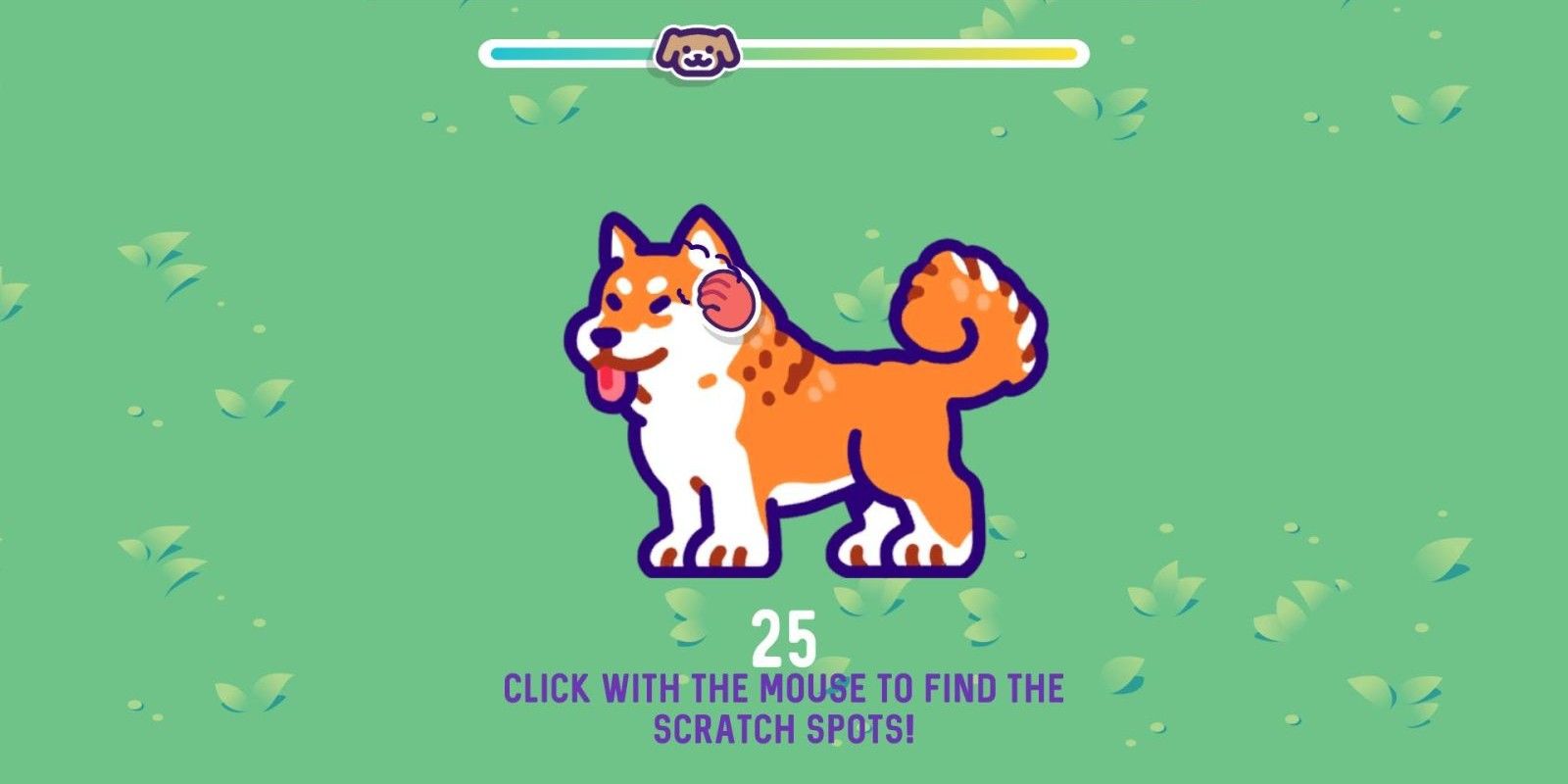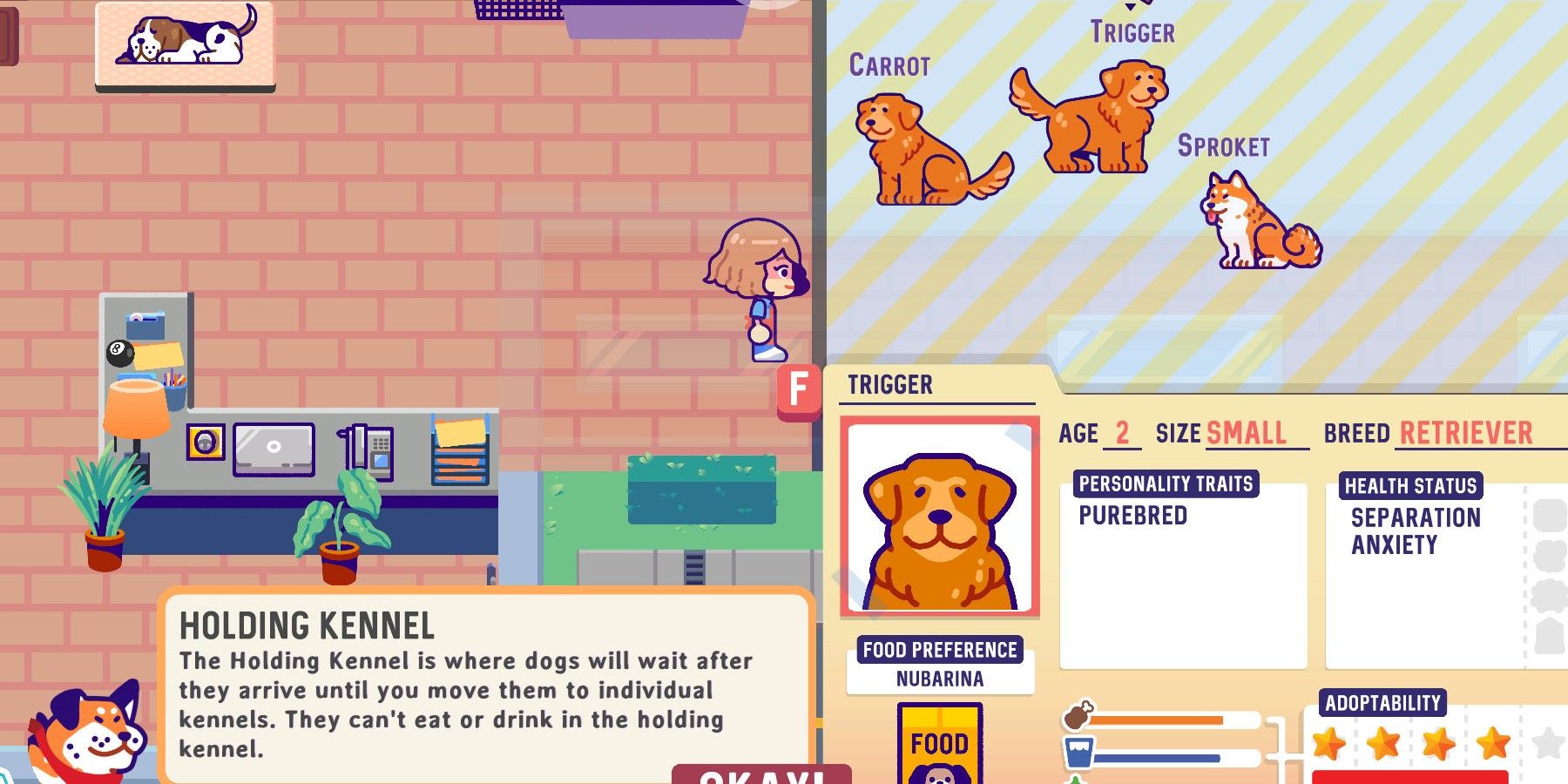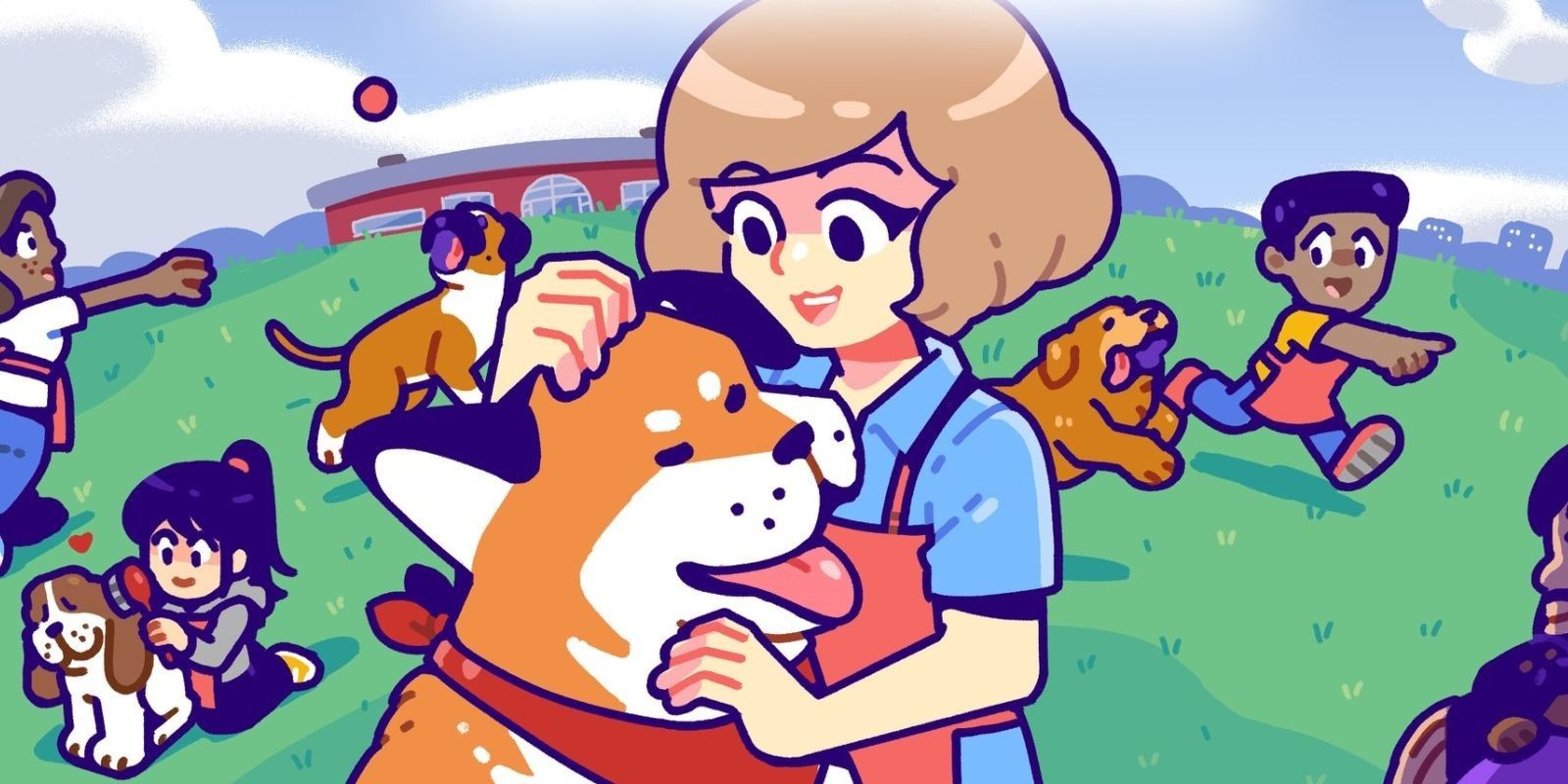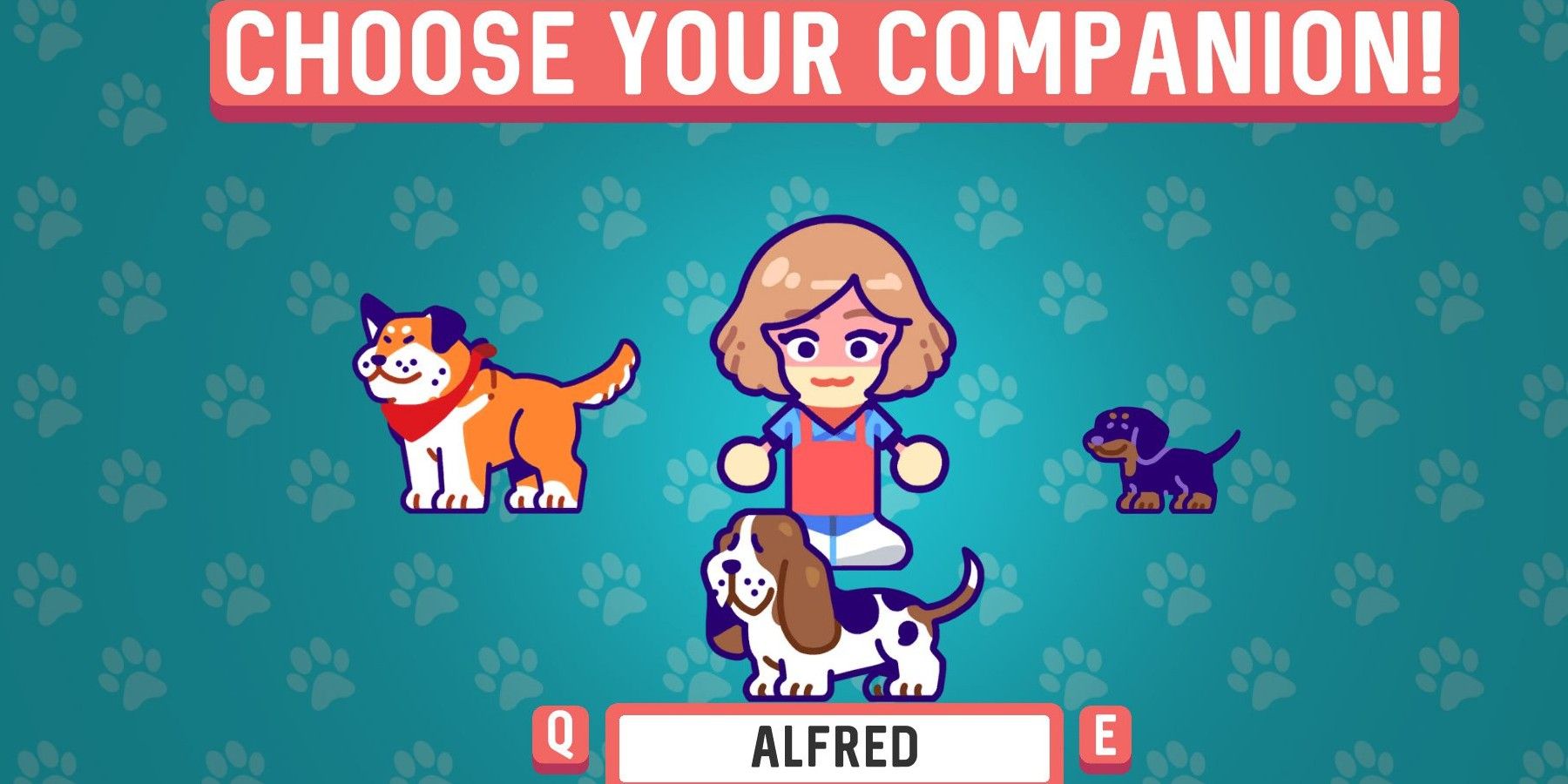Little Rock Games has created card games such as Galactic Scoundrels and Honor Bound, and board games such as Lineage: 1434. Now, it has created its first digital game: To The Rescue! The game, coming to PC, Mac, and Nintendo Switch, is a simulation of overseeing a dog shelter. Features include unique dogs with different generated traits, getting them adopted, upgrading the shelter, and working hard to keep its doors open.
A big factor of what makes this indie game stand out from others is that 20 percent of the profits Little Rock Games gets out of all To The Rescue! sales go to a real-world charity, the Petfinder Foundation. Little Rock Games co-founders Olivia Dunlap and Tanner Marshall put a lot of research into the simulator to respectably show some of the real-life struggles shelters go through, such as euthanasia (though gamers have an option to opt-out of engaging with that mechanic if they want). Dunlap and Marshall spoke to Game Rant about To The Rescue!, their life as a couple and co-developers, and what inspired their dog shelter simulator. The interview has been edited for clarity and brevity.
Q: Way in the beginning, what was it that inspired you guys to make To The Rescue?
Marshall: We were walking back from class on campus one day and Olivia just kind of threw the idea out there. Like there is a lot of interesting space to explore in terms of game design because you have this role where you ostensibly are there to help and save all the dogs you can, but obviously, you’re put in positions that are harder sometimes than others. From there it really sprung off and we realized there were really good ideas wrapped up in this and we started making a prototype.
Dunlap: Yeah, it started as an undergrad hobby project but as it grew, we really realized how much potential it had. Especially as we made early prototypes and got feedback from people who had a lot more experience from shelters than we did. Except at the time we weren’t living in a situation where we could get the experience that we wanted. It was something we were really interested in and were surprised to not see represented in games. So we just jumped off and started working on it ourselves and it just grew.
Q: How did you guys meet and become a couple before working on the game?
Dunlap: We met in middle school. We went to the same middle school and we started dating then and here we are. We both went to the same residential high school after that and got accepted to the same college. So we’ve just been sort of attached at the hip basically forever.
Q: Is this the first video game you guys have made? You have tabletop games and you also have a podcast.
Dunlap: Yeah so, Little Rock Games is a game studio and we just use the broadest definition of games as possible. Our first published game is a tabletop game and this will be our first digital game. We also do various contract work with other companies and organizations, especially here in Little Rock. So we do all kinds of different interactive exhibits and projects for things like, we’ve worked with a local hospital school as well as a local library and put together some really cool exhibits and projects for them. So we do a little bit of everything and we sort of just set this up as a way to follow what we thought was interesting at the time, you know, whether that be the new idea is this or the new idea is that. But no matter what we try to circle it into making things that are impactful in some way.
Q: On your website, your mission statement mentions three pillars: local, ethical, and impactful. How does To The Rescue! reflect those three pillars?
Marshall: To sort of go through them one by one, the local element, of course, we are releasing a game for everyone, so that’s a little harder to contextualize. Through the charity auction, we wanted to find a charity partner who helps local shelters all over the country, all over the world if possible. So we are happy that we found the Petfinder Foundation. We want people to feel when we say 20 percent of the profit is going to a charity that they are making an impact for them too, where they live. In terms of ethics, we want to highlight some of the struggles of operating an open admission shelter. So we try to be mindful of how things are depicted in the game, in how we approach simulating this environment.
I’m sure there are things we’ve done less right than we would want to, but it’s kind of an evolving process where we are always looking to make sure that we’re not introducing harmful ideas, for sure. Lastly, the impact, you know, To The Rescue! is a game first and it’s supposed to be fun first. But we also have goals of just creating some awareness of what struggles shelters go through so people can see it is kind of tough running a shelter like this. We’re not striving to change the world, but give people a little bit to think about in the projects we make.
Q: Speaking of the Petfinder Foundation. What made you guys decide on that particular place for giving some of the profits?
Dunlap: Well, it was actually an interesting process for us because right when we first came up with the idea and before we started working on it, we knew it would be a cool opportunity to raise money for a real-world charity. We always had it in mind that we wanted to find a partner but it was really hard to actually find that partner. We just started reaching out to people and had a hard time connecting to the right people and getting the ball rolling. It was actually our publisher that helped us get the ball rolling for us. They really understood what we were aiming for with our goals, and they helped hook us up with Petfinder Foundation.
I think Petfinder is perfect, the exact sort of thing we wanted to do. We didn’t want to find a partner that was a specific shelter, we wanted it to have as much reach as possible and to also align with what we wanted to show and represent in the game. Their mission is just wonderful because their goal is to help ensure no adoptable dog ever gets euthanized because they can’t find a home. They do a lot of different things to do that goal with their Petfinder website, various different grants and things that they send to shelters. We’re really happy to be partnered with them.
Q: What kind of research did you do to make the dog shelter game as authentic as you could?
Marshall: It was a lot of finding out everything we could online. There is a surprising amount of operating procedures and those kinds of things that are published and out there. Ultimately, it’s not really meant to be a true-to-life simulation. There was a lot of stuff we gloss over because there is a lot of granular detail involved. On top of that, as part of our Kickstarter, we are doing a zine that will hopefully contextualize some of the ways that real-life shelters are different from the shelter you are running in To The Rescue! As part of that, we’re speaking to a veterinarian school to get some feedback and expand on some of the initial research we’ve already done.
Dunlap: It’s been an ongoing process for us. When we first started, we jumped in without having much shelter experience. But we got feedback from people that volunteered in shelters. We were in contact a few times with a local animal rescue at Little Rock Animal Village. They haven’t had a direct role in shaping the game, but we definitely used that as an opportunity to find out what we were doing right, what we were doing wrong and also to identify things that were really important to the way shelters worked that we originally weren’t planning on including in the game. We are representing things in a little bit of an abstract and boiled down way in a lot of ways. But we still want to be earnest in how we represent the shelters and people who work in them.
Q: What other games would you compare To The Rescue! to?
Marshall: The biggest one that we always throw out is probably Prison Architect. There were a lot of design inspirations in terms of particular ways the inmates had file folders which listed part of their backstory like why they’re there, things about them. There is a fundamental similarity between making sure each entity you’re caring for has a dedicated space and all the resources they need and managing that as the population grows and hopefully getting people through the facility and not staying there. That’s probably the closest design inspiration but we sort of sampled a lot of different things. I think To The Rescue! will feel unique in its gameplay. It’s a sim management game but you’re taking more of a first-person perspective in terms of how its to you to manage everything on a special scale.
Dunlap: Some of the other games that we looked up to are Stardew Valley and Animal Crossing. What we really liked about those games is in addition to them both being really cute games that probably have a lot of audience overlap, we also like that you’re controlling a specific character in those games as opposed to like in Prison Architect, looking over everything and building the buildings.
We really wanted to have that sort of personal interaction, because we really wanted to emphasize you getting to know the dogs, the individual dogs, not just numbers. That was something from Prison Architect we decided to really modify and change because we liked the way they represented these things, but it was completely optional and it was sort of just window-dressing, and we wanted it to be an integral part of the game. Because we are representing some of the harder things in running a dog shelter, we also looked at some games that address difficult topics in really interesting ways. One of those that we looked into early on was A Mortician’s Tale, which is a really short narrative game that’s about death. That’s something we looked at a lot as well. We look at a lot of simulation games but a lot of games in other genres as well.
Q: What are your personal favorite parts of the game you’ve made?
Marshall: That one’s tough. I think that one of my favorite parts has got to be in the social media feed in the game, we generate sort of follow-up vignettes for dogs that have been adopted at the shelter. It’s a small thing but it gives you continuity of “okay, sure this dog was a generated random bundle of traits that I took care of for a little bit” but then they get adopted and you see their new owner. I liked that sense of continuity follows these virtual entities after they leave the shelter. We try to play with that some with events that sort of bring you back into contact with these dogs in different contexts.
Dunlap: I feel like the easy answer is just the dogs themselves because there is a lot of variety in there. Even spending countless hours working on the game in different contexts, I still smile sometimes when I get a generated dog that is just like, it’s just really funny or really cute. So the variety we were able to have in the game despite the relatively small scale, we have like 29 different appearance variants for the dogs that are all hand-animated. Our animators did incredible work. They’ve brought so much life into a small and simple art style. Between that and all the different traits used to represent them, it is really just seeing the variety. Every dog is different and we wanted to make sure that moment of finding the right adopter looking for this trait that a dog has is really special.
Q: What would you say was the hardest part of making the game?
Marshall: There have been lots of different parts that have been hard in different ways. Of course, implementing and designing the euthanasia aspect of the game is difficult and involves some uncomfortable research to make sure we’re not depicting things inaccurately at least. That one was definitely hard, but I think from a more technical sense, this is our first big project, so bringing in people from different disciplines and getting a workflow going for the first time was definitely a big challenge, but I think we improved a lot over the course of production. Things run pretty smoothly now.
Q: Were there any unique setbacks from creating this game as both business partners and a couple?
Dunlap: I don’t feel like there is any specific moment I can point to, because we work together really well. It really just comes down to the fact that, especially with COVID and not having an office so we work here in our home office, so we live and work in the same place and working on the same project and talking about the same things. It can be just isolating I guess from the rest of the world. There are definitely issues that came up but overall, I feel it’s something that worked really well with us, because it is nice having somebody’s opinion you can trust and that we have enough of a built-up relationship that we know we’re not going to take it personally if we have disagreements about our work. So I think in general it works well for us and we found a way that works well for us, but it has been challenging at times.
Marshall: I think we do a pretty good job compartmentalizing those different aspects of our lives but also sharing in the joy that we both get from working on games. The pandemic definitely compounded the smaller issues but overall it’s a really enjoyable way to work for us.
Q: What’s the size of the team that’s behind the game?
Dunlap: We’ve got four other people working on the game in different capacities. We are the only people from Little Rock Games who have been working on it full-time. We have one other person in Little Rock Games doing part-time work helping us out with A.I. design and sound. Then we have three people on contract that have been working on the game as well, our artist, animator, and community manager. So the total team size is six, plus help here and there from our publisher and localization team and things like that as well.
Q: Was making the game expensive?
Dunlap: I think making any game is expensive. It’s always more expensive than you think. We had a Kickstarter campaign in 2019 which totally blasted our expectations out of the water. But it complicated things in interesting ways, because the game is vastly different from what it was then. It went through a complete art overhaul. We brought an animator that really improved the quality of the game, so all we had in that initial basis of funding was no longer adequate. But thanks to our publisher, we’ve been able to make it through and fund the game. Especially because of how long we’ve been working on the game off the clock since it started as a hobby project, it’s actually really hard for us to estimate the total budget of the game if you consider all of those things. It has definitely been expensive, but we’re a small team and made it work with what we can.
Q: How long did it take from the start and finish to create the game?
Marshall: I think our first message about it is from 2017? I think? There was a lot of on and off through the first couple of years. We were still finishing up undergrad. A few months before the Kickstarter, I’d say, is when we made the most progress and began working on it in earnest and building the concept. Since then, it’s been almost as much time as we can give to it, so it’s been probably about two years of active development.
Dunlap: It feels like it’s been a project that has been a part of our entire lives at this point, because we worked on it in undergrad and now we’ve gone through grad school and we’ve still been working on it. It’s been five or six years of a constant thing in the background that we’ve been working on. It’s really exciting to finally be able to put it out there.
Q: Does To The Rescue! have a plot? Would you say it’s a linear game or is it one that people can keep coming back to?
Dunlap: It’s a little bit of both actually. First and foremost it is a sort of sandbox game. It has the loop of finding dogs, taking care of them, and getting them adopted, but there is a plot in the game. It follows a character that is first introduced to the world of shelters and eventually gets put in charge of running their very own shelter from scratch. The story in the game really serves the purpose of putting a little more of a human angle on it and helping contextualize the shelter as part of a community instead of being your own little bubble. That was one thing that was important from real shelters from what we saw, was the community that they’re serving, the people that they’re helping, and the dogs that they’re helping. So there is a story and it's relatively loose and is mostly there to give you a jumping-off point into the world.
Q: Lastly, do you guys personally have your own dogs?
Marshall: We have two dogs. We have Keanu, a Great Dane who is almost seven. We’ve had him for a while. Then we have another dog who just kind of arrived, Ziggy, who just showed up on our porch during a snowstorm last year. He’s actually the inspiration for the opening scenario in To The Rescue!. He didn’t find his former home, but the dog in the opening of To The Rescue! might be able to find someone.
[END]
To The Rescue! releases November 4 on Mac, PC, and Switch.

.jpg)
.jpg)
